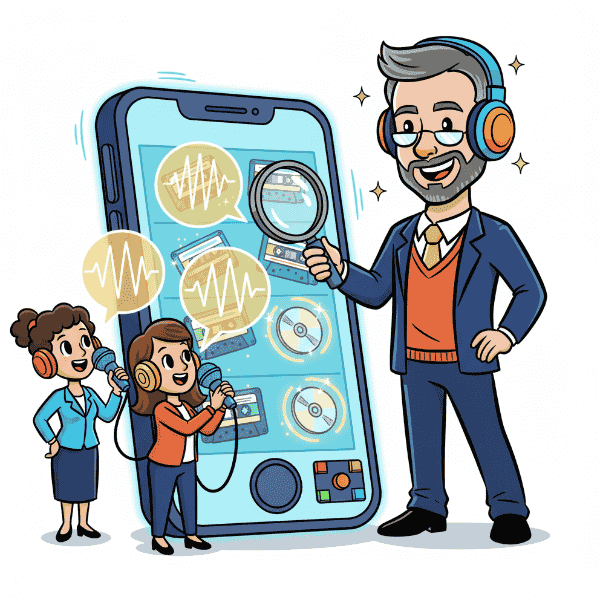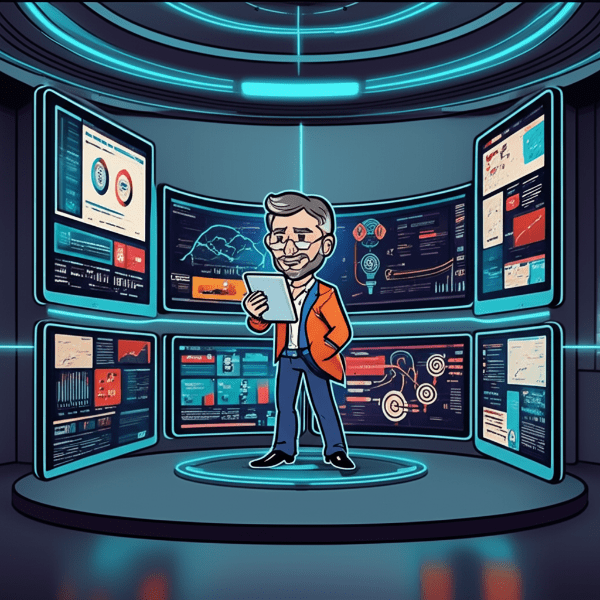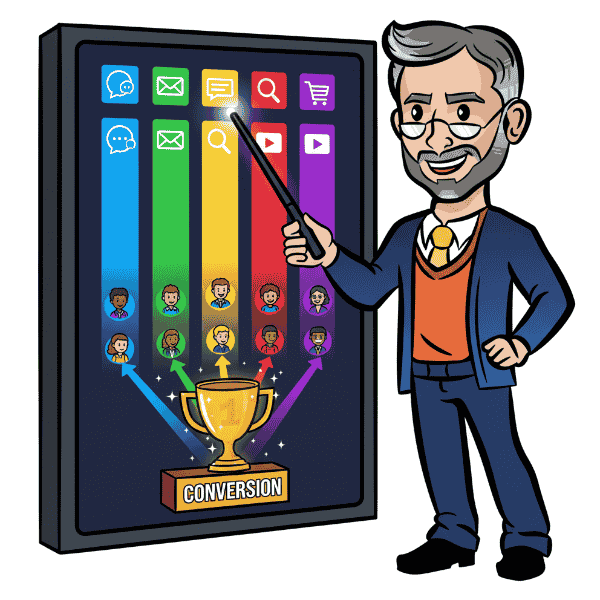Definition: Cross-platform funnels are marketing funnels that guide customers through multiple channels and devices—such as social media, email, search, and mobile apps—while maintaining a consistent experience. Instead of relying on a single source of traffic, cross-platform funnels connect different touchpoints to nurture leads wherever they engage with your brand.
Use it in a Sentence: The brand built cross-platform funnels that connected Facebook ads, email campaigns, and website retargeting to increase conversions.
Key Benefits of Cross-Platform Funnels
- Seamless User Experience: Cross-platform funnels offer a consistent experience across different devices and platforms, reducing friction and keeping users engaged from discovery to conversion.
- Smarter Personalization: Thanks to hyper-personalization algorithms, businesses can deliver content and offers that adapt in real time based on user behavior, preferences, and touchpoints — creating highly relevant journeys.
- Improved Attribution: Tracking user behavior across platforms gives marketers better insight into what’s working, helping refine strategies and allocate budget more effectively.

- Higher Conversions: With a unified funnel structure, leads don’t fall through the cracks. Whether users start on social and convert via email or move from mobile to desktop, each step is optimized to guide them forward.
- Enhanced Data Accuracy: A synchronized funnel promotes better CRM hygiene, reducing duplicate entries and ensuring data integrity across your systems — crucial for accurate targeting and reporting.
Core Elements of Cross-Platform Funnels
- Audience Mapping: Identify where your target audience spends time and how they interact across various channels, so you can craft journeys that meet them where they are.
- Content Synchronization: Ensure messaging, offers, and brand voice stay consistent across all platforms, while tailoring format and delivery to match the channel’s best practices.
- Automated Triggers: Use hyper-personalization algorithms to set up intelligent automation rules that respond to user behavior across platforms — like email follow-ups after social engagement or retargeting based on website visits.
- Integrated Tools & CRM: Connect platforms with your CRM to centralize data. This improves CRM hygiene and allows for more accurate segmentation, personalization, and follow-up.
- Analytics & Feedback Loops: Track funnel performance across platforms, using unified dashboards to analyze drop-off points and optimize touchpoints.
More Definitions
(From the Sales & Marketing Jargon Encyclopedia)
- Customer Retention: The process of keeping a customer engaged and satisfied so they continue buying from your business over time.
Read More> - Customer Care Marketing: A strategy that focuses on building long-term relationships by providing exceptional support, personalized communication, and added value throughout the customer journey.
Read More> - Customer Care Marketing: A strategy that focuses on building long-term relationships by providing exceptional support, personalized communication, and added value throughout the customer journey.
Read More> - Customer Retargeting: A marketing strategy that involves showing ads to people who have previously interacted with your website, app, or content to bring them back and encourage conversion.
Read More>























